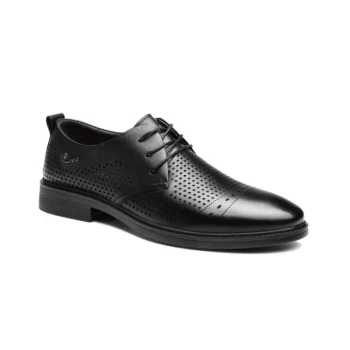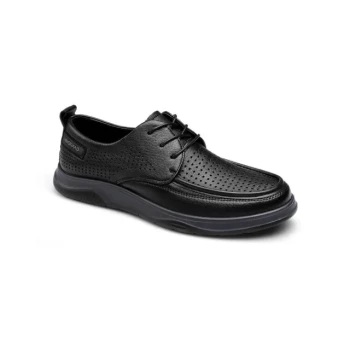To put it simply, vegan-friendly leather alternatives are materials designed to mimic the look and feel of animal leather without using any animal products. The most common options fall into two main categories: traditional synthetics like PVC and polyurethane, and innovative plant-based materials derived from sources like cork or fruit waste.
The term "vegan leather" is not a single material, but a broad category. Understanding the difference between plastic-based synthetics and plant-based naturals is the key to choosing an alternative that aligns with your specific goals for ethics, sustainability, and performance.
Deconstructing "Vegan Leather": The Two Primary Categories
Not all vegan leathers are created equal. They are typically produced from two fundamentally different sources: synthetic plastics or natural, plant-based fibers. Each has a distinct profile in terms of feel, durability, and environmental impact.
Category 1: Traditional Synthetics (Plastic-Based)
These materials are the most established and widely available alternatives to animal leather. They are engineered to be highly consistent and durable.
Materials like PVC (polyvinyl chloride) and PU (polyurethane) are essentially plastics layered onto a fabric backing.
Brands often develop their own proprietary versions of these synthetics. For example, materials like Birko-Flor and Birkibuc are well-known synthetics designed for resilience and a specific textural finish.
The primary advantages of synthetics are their high resistance to water and their uniformity in appearance, making them easy to clean and maintain.
Category 2: Innovative Naturals (Plant-Based)
This is a rapidly growing category focused on using renewable resources to create leather-like textiles.
These materials are made from a diverse range of sources, including cork, pineapple leaves (Piñatex), apple peels, and even mushroom mycelium.
Plant-based leathers are often celebrated for their lower environmental footprint and unique, organic textures that can differ from the perfect uniformity of synthetics.
While innovative, their durability and performance can vary widely depending on the specific source material and manufacturing process.
Understanding the Trade-offs
Choosing a leather alternative involves weighing factors beyond just animal welfare. The environmental impact and physical properties of these materials differ significantly.
The Environmental Question
While all vegan leathers avoid the ethical issues of animal agriculture, their environmental credentials vary.
Traditional synthetics like PVC are derived from fossil fuels. Their production and disposal can release harmful chemicals, raising significant environmental concerns.
Plant-based options are generally considered more sustainable, as they utilize renewable resources and often repurpose agricultural waste. However, it's important to verify the specific binders and coatings used, as some may still contain plastics.
Performance and Comfort
There is often a trade-off between durability, breathability, and feel.
Animal leather is naturally porous, allowing it to breathe. Many plastic-based synthetics are not breathable, which can affect comfort in products like footwear.
High-quality synthetics are exceptionally durable and resistant to scuffs and water. Plant-based leathers can be more delicate, though advancements are continually improving their resilience.
Animal leather develops a unique patina as it ages. Most vegan alternatives are designed to maintain their original appearance over time and will not age in the same way.
Making the Right Choice for Your Goal
Your ideal material depends on which factor you prioritize most.
- If your primary focus is animal welfare: Any material labeled "vegan," whether synthetic or plant-based, will meet this standard.
- If your primary focus is environmental sustainability: Prioritize plant-based materials like cork, apple, or pineapple leather over petroleum-based synthetics like PVC.
- If your primary focus is maximum durability and easy care: High-quality synthetics like PU, Birko-Flor, or Birkibuc are engineered for resilience and simple maintenance.
Ultimately, choosing a leather alternative is about making an informed decision that aligns your purchasing power with your personal values.
Summary Table:
| Material Category | Common Examples | Key Characteristics |
|---|---|---|
| Synthetic (Plastic-Based) | PU, PVC, Birko-Flor | Highly durable, water-resistant, uniform appearance, less breathable |
| Natural (Plant-Based) | Piñatex (pineapple), apple leather, cork | Renewable resources, lower environmental impact, unique textures, varying durability |
Ready to source high-quality vegan leather footwear?
As a large-scale manufacturer, 3515 produces a comprehensive range of vegan-friendly footwear for distributors, brand owners, and bulk clients. Whether you need durable synthetics or innovative plant-based materials, our production capabilities encompass all types of shoes and boots tailored to your market's demands.
Contact our team today to discuss your manufacturing needs and get a quote!
Related Products
- Lightweight Breathable Training Shoes for Wholesale & Custom OEM Manufacturing
- Wholesale Breathable Training Shoes Custom Athletic Footwear Manufacturer
- Wholesale Durable & Breathable Training Shoes for Custom Brands
- Durable Rubber-Soled Utility Shoes for Wholesale & Custom Brand Manufacturing
- Factory Direct Wholesale Leather Comfort Shoes with Dial Closure
People Also Ask
- How do non-slip athletic shoes differ from regular athletic shoes? Discover the Grip Technology
- Does more ground contact area mean better support? Unlock the Secrets of Stable Footwear
- How do athletic shoes with non-slip features differ from regular ones? Discover the Grip Advantage
- Why are running shoes and walking shoes not interchangeable? Avoid Injury with the Right Footwear
- What should be considered when choosing smart trainers for business casual? A Guide to Professional Style



















